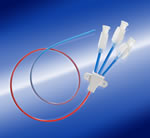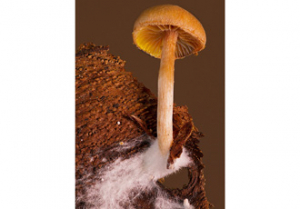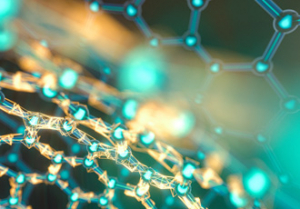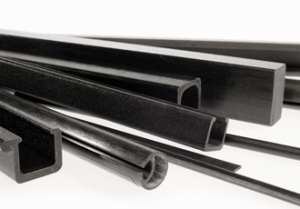PolyMedex Expands NanoMed Product Offering for Minimally Invasive Devices
12th February 2010
Source:
PolyMedex Discovery Group

PolyMedex Discovery Group announces the expansion of the NanoMed™ nanoparticle technology to include thermoplastic elastomers (TPE) formulations for the minimally invasive device market. These new formulations dramatically increase flexural modulus (stiffness) of polymers while maintaining flexibility resulting in increased push and torque performance for catheter devices.
PolyMedex patented NanoMed compounds incorporate ultra-fine nanoparticles within the polymer matrix using dispersion technology to create oriented reinforcement at the molecular level. The nanoparticles interact directly with the polymer structure resulting in substantial improvement of selective material properties at low filler loadings. In newly developed Pebax® PEBA block co-polymer formulations with 9% by weight nanoparticles, flexural modulus properties are doubled in comparison to the unfilled polymer.
Nanoparticles used in NanoMed formulations have a thickness of less than one nanometer and widths in the range of five micrometers. Unlike traditional polymer reinforcing additives, such as carbon or glass fibers, which are macro reinforcing agents of the plastic part, nanoparticles immobilize only select portions of the polymer structure. Flexural modulus is increased while preserving elasticity, impact resistance, downstream processability, and biocompatibility.
In vascular catheters, improved flexural modulus allows the surgeon to better push and torque the device. Yet, flexibility must be retained so the catheter can advance through the long and complex vascular path to the desired therapeutic area. Traditional unfilled polymers for these applications, such as thermoplastic elastomers and urethanes, have good flexibility and sufficient stiffness for push and torque in larger diameter catheters with relatively thick walls. However, vascular catheter diameters are getting smaller in order to reach therapeutic locations further in the body (i.e. neurovascular applications) and the wall thickness are getting thinner to allow for more working area within the catheter. “Replacing these polymers with stiffer polymers often results in attrition of other properties, such as flexibility,” said Byron Flagg, Product Manager – PolyMedex Discovery Group. “It is also very difficult for designers to validate new polymers for their devices.”
NanoMed formulations allow designers to utilize current polymers for their small diameter, thin wall catheter devices and increase push and torque properties while maintaining elasticity, impact resistance, processability, and biocompatibility.
Nanoparticles used in NanoMed formulations have a thickness of less than one nanometer and widths in the range of five micrometers. Unlike traditional polymer reinforcing additives, such as carbon or glass fibers, which are macro reinforcing agents of the plastic part, nanoparticles immobilize only select portions of the polymer structure. Flexural modulus is increased while preserving elasticity, impact resistance, downstream processability, and biocompatibility.
In vascular catheters, improved flexural modulus allows the surgeon to better push and torque the device. Yet, flexibility must be retained so the catheter can advance through the long and complex vascular path to the desired therapeutic area. Traditional unfilled polymers for these applications, such as thermoplastic elastomers and urethanes, have good flexibility and sufficient stiffness for push and torque in larger diameter catheters with relatively thick walls. However, vascular catheter diameters are getting smaller in order to reach therapeutic locations further in the body (i.e. neurovascular applications) and the wall thickness are getting thinner to allow for more working area within the catheter. “Replacing these polymers with stiffer polymers often results in attrition of other properties, such as flexibility,” said Byron Flagg, Product Manager – PolyMedex Discovery Group. “It is also very difficult for designers to validate new polymers for their devices.”
NanoMed formulations allow designers to utilize current polymers for their small diameter, thin wall catheter devices and increase push and torque properties while maintaining elasticity, impact resistance, processability, and biocompatibility.
Similar articles
More from PolyMedex Discovery Group
- FOSTER CORPORATION ANNOUNCES NEW APPOINTMENT 15th July 2011
- PUTNAM PLASTICS INTRODUCES WIRE REINFORCED MULTI-LUMEN TUBING FOR HIGH PERFORMANCE MEDICAL DEVICES 18th March 2011
- Polymedex Develops Multi-layer Polyimide And TPE Tubing That Combines The Best Of Both Worlds 10th November 2010
- Polymedex Introduces Custom Melt Filration For Catheter And Balloon Polymers 4th November 2010
Product Centre Updates
2024 World Battery & Energy Storage Industry Expo (WBE)
8th August 2024
China 1st and 2nd Floor, Area A, China Import and Export Fair Complex












Write a comment
No comments